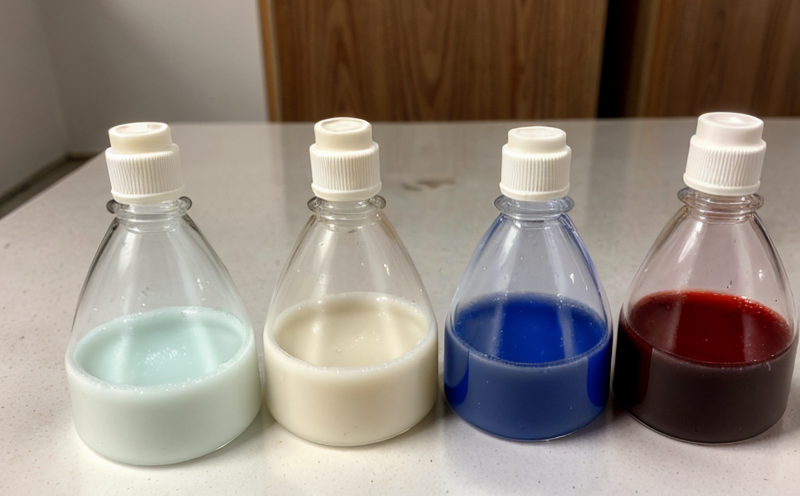Adhesive Monomer Residue Testing
In the realm of chemical testing, adhesive monomer residue analysis is a critical process that ensures the quality and safety of adhesives used in various industries. Adhesives are widely used across sectors such as construction, automotive, electronics, and packaging due to their versatility and efficiency. However, the presence of residual monomers can significantly impact the performance and longevity of bonded materials. This testing service focuses on identifying and quantifying the levels of monomer residues present in adhesives after polymerization.
The significance of this test lies in its ability to ensure that adhesives meet regulatory standards and customer expectations. Regulatory bodies such as ASTM, ISO, and others set specific limits for residual monomers to prevent health risks and environmental damage. For instance, the presence of high levels of unreacted monomers can lead to off-gassing, which is a significant concern in confined spaces like aircraft cabins or enclosed living environments.
The testing process involves several key steps: sample preparation, extraction, analysis, and reporting. Samples are typically prepared by cutting small pieces from the adhesive material. The extracted residues are then analyzed using sophisticated instrumentation such as gas chromatography (GC) or liquid chromatography (LC). These methods allow for precise quantification of monomer types present in the adhesive.
The acceptance criteria for this test are stringent, and they vary depending on the intended use of the adhesive. For example, adhesives used in medical devices must comply with stricter standards than those used in construction materials. Compliance with these standards not only ensures product quality but also protects end-users from potential health hazards.
Understanding the importance of this testing is crucial for organizations involved in R&D and compliance management. By incorporating this service into their quality assurance protocols, companies can maintain a competitive edge by delivering products that meet or exceed industry expectations. This testing helps to identify potential issues early on, allowing for corrective actions to be taken before the product reaches the market.
In conclusion, adhesive monomer residue testing is an essential component of ensuring product safety and performance across various industries. By adhering to international standards and best practices, companies can build trust with their customers while maintaining regulatory compliance.
Industry Applications
| Industry Sector | Application |
|---|---|
| Aerospace | Ensuring adhesives used in aircraft do not off-gas harmful chemicals. |
| Bioengineering | Verifying that medical implants are free from harmful monomer residues. |
| Consumer Products | Guaranteeing that household products containing adhesives meet safety standards. |
| Automotive | Checking for compliance with automotive industry regulations regarding adhesive use. |
The table above highlights some key applications of adhesive monomer residue testing across different industries. Each sector has unique requirements and regulatory frameworks that necessitate thorough testing to ensure product safety and performance.
Quality and Reliability Assurance
- Conformance with international standards such as ASTM D4571, ISO 10993-6, and IEC 60335.
- Use of advanced analytical techniques like GCMS (Gas Chromatography-Mass Spectrometry) for precise quantification.
- Validation of test methods through inter-laboratory studies to ensure consistency in results.
- Continuous monitoring of testing procedures and equipment to maintain accuracy over time.
The quality and reliability assurance process involves multiple steps aimed at ensuring consistent and accurate results. Adhering to international standards ensures that the tests are conducted uniformly across different laboratories, which is crucial for maintaining credibility in the industry.
International Acceptance and Recognition
The adhesive monomer residue testing service offered by our laboratory is recognized internationally for its accuracy and reliability. Our compliance with international standards such as ASTM D4571 and ISO 10993-6 ensures that the results are accepted across borders, making it easier for companies to export their products without facing additional challenges.
Our rigorous quality control measures and continuous improvement efforts have earned us a reputation for excellence. Many leading manufacturers and suppliers rely on our services to ensure their adhesives meet stringent regulatory requirements. This recognition underscores the importance of this testing service in maintaining global standards for product safety and performance.





